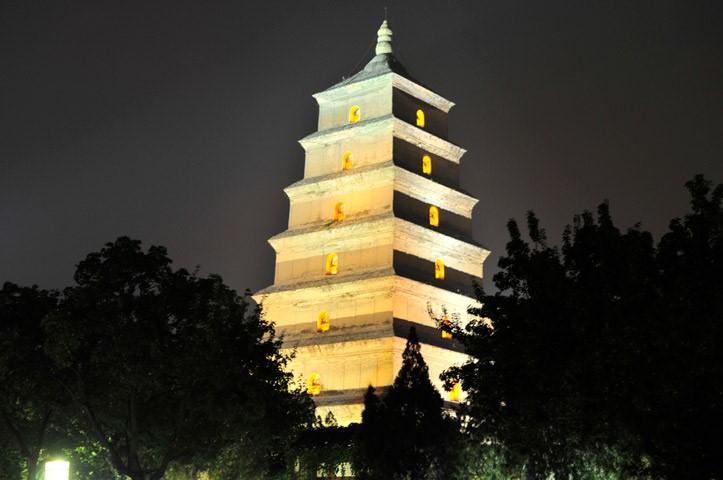Banpo Village Remains

The Banpo Village remains are located between the Chanhe and the Bahe rivers, to the east of Xi'an city. The village was an authentic matriarchal clan community of the Yangshao Culture. More than 400 sites like this have been discovered on the Central Shaanxi Plain in the Yellow River Valley. The Yellow River Valley has always enjoyed the reputation of being the birthplace of China's ancient culture.
The Yangshao Culture belonged to China's Neolithic Age. It was named after the Yangshao Village which was discovered in Mianchi County, Henan Province in 1921. The culture was located mainly in the middle and lower reaches of the Yellow River Valley. Production tools, such as the knife, axe, daze and chisel, were mostly made of stone by means of grinding and polishing. There were also chipped stone implements and bone objects as well. Pottery utensils for daily use wee chiefly made from refined terra-cotta and red sandy clay. Some objects of refined terra-cotta were decorated with zoomorphic and geometric designs. Agriculture dominated the economic life of that age, while fishing and domestic animal rearing came second. All these finds give evidence to the fact that matriarchal clan communities came to their prime. With so many pieces of painted pottery, Yangshao Culture is also known as the Painted Pottery Culture.
The matriarchal clan community shows the first signs of primitive communes after advancing from the primitive tribes, and came to an end not long before patriarchy society was established. This happened in approximately the period spanning the late Paleolithic and Neolithic Ages. Women then played an important part in society. This stage can be divided into two periods: an early period and a developmental period. As far as the first period was concerned, women were engaged in collecting wild fruits while men were occupied with fishing and hunting. As a result of the intertribal communal marriages, children were closely associated with their mothers from morning to night. Yet their fathers remained something of a stranger to them. They followed their mothers in the family pedigree. The latter period saw the transition to exogamy. Women took up farming, and managed the tribal affairs and the economic life as well. Husbands lived in the homes of their wives, and they were also recorded together with their property in the family pedigree after their wives.
The Banpo Village covers an area of 50,000 square meters and is divided into three sections: the Residential Section, the Pottery-making Section, and the Burial Section. There were five excavations between 1954 and 1957, a total area of 10,000 square meters. The discoveries include 46 horse remains, two pigsties, 200 cellars, 174 adult tombs, 73 child's burial urns, six pottery kilns and many production tools and living utensils. All these depict the production and lives of the Banpo ancestors 6,000 years ago during the prosperous period of the matrilineal clan society.
In 1958, the Banpo Museum, the first on-the-spot museum in China was set up, on the basis of the archaeological excavation. The museum consists of two exhibition rooms and a great hall that houses the remains of the village.





